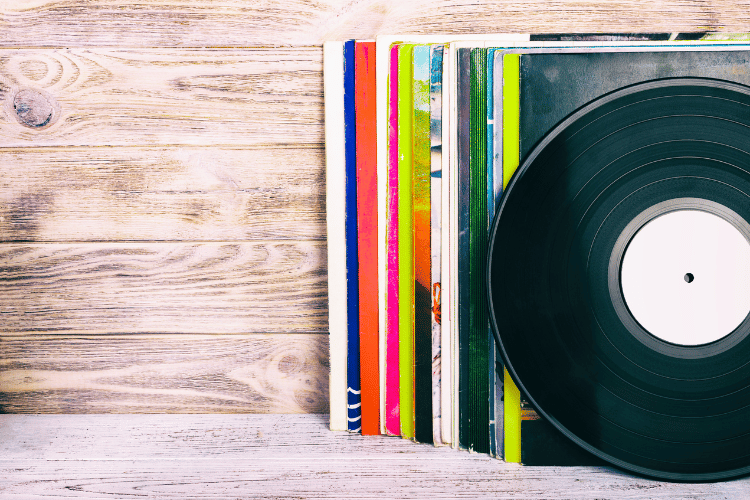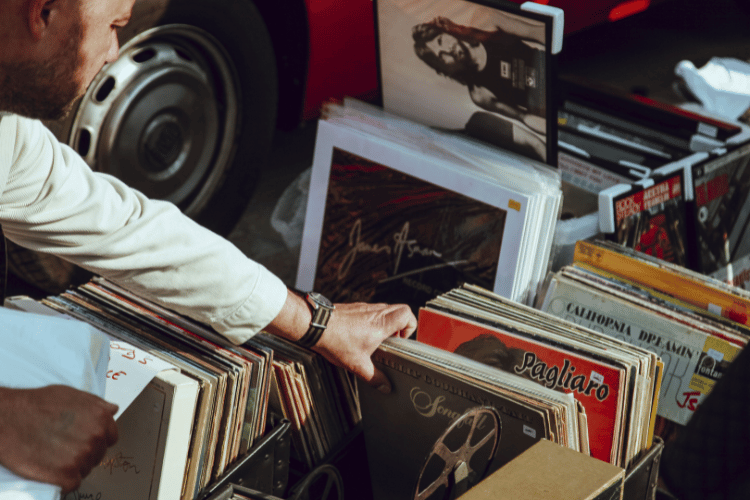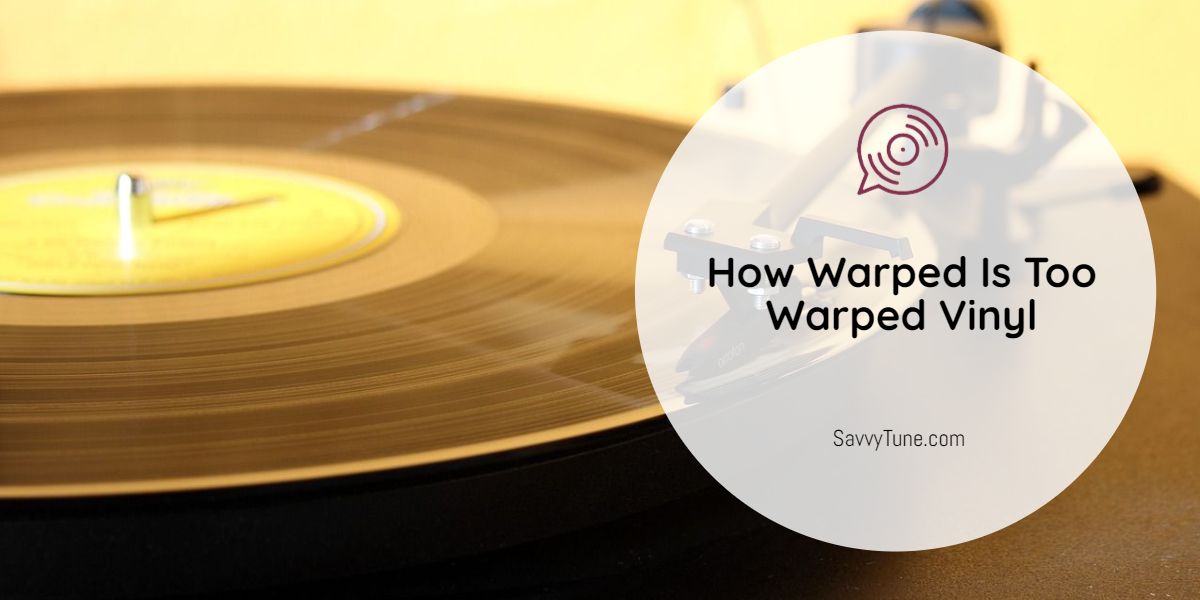Discovering that your vinyl records are warped can be heartbreaking, especially if they’re related to fond memories. However, noticing warps on records doesn’t necessarily mean they’re damaged.
Despite being warped, your vinyl may play smoothly if it’s not severely distorted. So, you need to know how warped is too warped vinyl.
In this post, we’ll walk you through how to tell if vinyl is too warped. More importantly, we’ll explain how you can protect your vinyl from warps.
How to Tell If a Vinyl Record Is Too Warped?
You can tell your vinyl is too warped by holding it at your eye level and looking at it closely. If there are extreme bends or twists in the record, it’s too warped.
Another determinant is that you can hear distorted sounds for a long time when playing the record. You may also notice continuous skips.
Additionally, if the record is too-warped, it may jump out of the turntable when you run it.
Assessing Your Vinyl
To ensure whether your vinyl warping is severe or slight, perform these two tests:
1. Appearance Check
Hold the record at eye level and inspect it. That way, you’ll be able to spot the exact degree of warping. If it’s slightly warped, it might be played normally.
Conversely, if it’s hugely curved, you should perform the second check below to know if it’s valid or not.
2. Sounds Check
You’ll notice some sound anomalies when you play the vinyl record if it’s too warped. This may include distorted or muted sounds.
The anomalous sounds may also be in the form of popping, skipping, or even crackling. You’ll notice these audible defects, whatever the type of turntable you use.

These anomalies may be slight or extreme, depending mainly on how warped the records are.
Nevertheless, if you don’t hear any or only notice a little, this indicates the record’s good condition.
How to Fix Your Warped Vinyl?
Unfortunately, warped vinyl can’t return to its original condition by any means. However, some fixes can minimize the record’s damages and make it playable.
Here are a few practical solutions:
For Minor Warps: Flatten with Weight
To flatten your warped vinyl, you can use heavy objects to press the records and adjust their shape.
To do so, you’ll need two large books, 12 x 12 inches at least. If you don’t have books, use other similar objects of the same size.
Related: How to clean stylus with magic eraser
After bringing the heavy books, follow these steps:
- Place the record in its inner sleeve.
- Position the record in between the two heavy books.
- Leave the vinyl and the heavy books on an even surface for at least two weeks.
- After a few weeks, the vinyl will get flattened.
For Major Warps: Flatten with Heat and Pressure
If the warp of the vinyl is major, for example, an S-shaped warp, you can use heat to straighten it. To do so, you’ll need two sheets of glass. Alternatively, you can also use two tiles.
The important thing is that the two sheets should be 15 x 15 inches. After preparing the glass or tiles, follow these steps:
- Place the record in its sleeves and position it in the middle of the two sheets.
- Position them under the sun’s heat on an even surface. The records shouldn’t be directly exposed to the heat.
- Place some extra weight over the glass if you can.
- Leave the objects in that condition for at least a day.
Nonetheless, avoid using the widespread oven method to heat the records, as it has many potential downsides.
It can damage the records. It can also release poisonous chemicals all around the oven, contaminating your food and risking your health.
For a Large Number of Warped Vinyl: Use Record Flattener
This method might be expensive, but it’s incredibly effective and much more time-saving if you have countless pieces of vinyl.
You can purchase record flatteners from record stores or many online e-commerce stores. These devices typically consist of two bulky rings, two pieces of fabric for protection, and a warmer.
Records flatteners fix the warp by applying three forces: pressure, weight, and heat on the records simultaneously.
What makes such devices better than using the manual method is that they accurately distribute the weight evenly over the records. That way, they deliver more satisfying results.
Depending on the device type, the flatting process can take two to three hours.
To Get a Professional Fix: Order Record Flattening Service
If you don’t want to fix your records yourself, there are a lot of record-flattening services out there.
In addition to straightening your vinyl, usually, the service provider will also clean them. So, these services are good options if you have precious vinyl, and want a total rejuvenation for them.
Related: Best Ultrasonic Vinyl Record Cleaners
How to Protect Your Vinyl from Getting Warped?
Due to their high softness and thinness, vinyl records are highly susceptible to damage. The two main factors behind warps are the same ones used to fix them: temperature and pressure.

To avoid the damaging effect of those two factors, follow these storing instructions:
Stack the Records Vertically
The way you store your vinyl hugely impacts them positively or negatively. To protect your records from getting warped, keep them in an upright position.
In addition, position them inside their sleeves and jackets and keep their poly cover protecting them.
Nevertheless, for any reason, if you want to place them horizontally, avoid stacking multiple records over each other.
This is because the weight of the upper records may cause warping to the lower ones.
Keep an Appropriate Temperature
Ideally, you need to store your records at around 60–70°F. If they’re kept at an extremely low or high degree for a long time, they’ll be prone to severe damage.
Users Also Read: Best Cartridge For Technics SL-D2
So, avoid storing your records where the temperature might be too high or low, like inside the garage or in your car.
Ensure Records Are Dry
Too much moisture may affect the temperature of the vinyl records or weaken their structure. That way, they’ll be more susceptible to warps.
A good idea to protect them from undesired humidity is to place extra outer sleeves over their inner ones.

